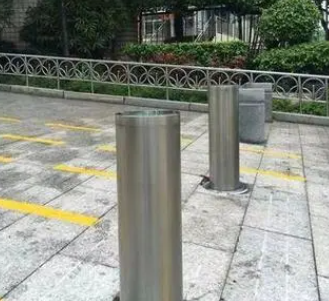Stainless steel bollards usually do not rust because their main components contain chromium, which reacts chemically with oxygen to form a dense chromium oxide layer, which
prevents further oxidation of the steel and thus has strong corrosion resistance. This dense chromium oxide layer can protect the stainless steel surface from most environmental
erosion, making it anti-corrosion.
However, surface blackening of stainless steel bollards may still occur under certain conditions. The main reasons for the blackening of the surface of stainless steel bollards may be:
Surface contaminants: If the stainless steel surface is exposed to or deposited with contaminants for a long time, such as dust, dirt, grease, etc., a layer of dirt may form, causing the
surface to turn black.
Oxide deposition: In some special environments, the surface of stainless steel may be subject to the deposition of some oxides, such as rust or other metal oxides, which can cause
the surface to blacken.
Chemical reaction: Under the action of certain chemicals, a chemical reaction may occur on the surface of stainless steel, causing the surface to turn black. For example, reactions
may occur after contact with substances with strong chemical properties such as acids and alkalis.
High temperature environment: In high temperature environment, oxidation may occur on the surface of stainless steel, causing the surface to turn black.
For stainless steel bollards, regular cleaning and maintenance is very important. You can use a mild detergent and a soft cloth to remove dirt and grease from the surface. In addition,
when using stainless steel bollards in special environments, care should be taken to avoid contact with chemicals and keep the surface dry and clean to extend the service life of the
stainless steel bollards.
Please inquiry us if you have any questions about our products.
You also can contact us by email at ricj@cd-ricj.com
Post time: May-21-2024








